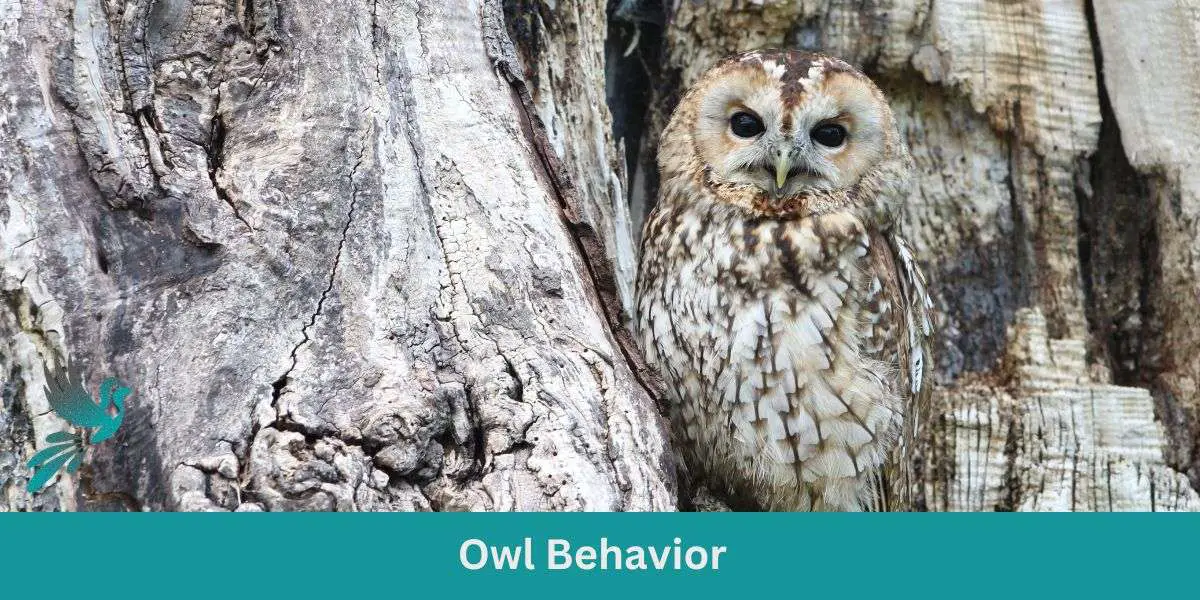Owls, those silent sentinels of the night, have fascinated us for generations with their distinctive calls, haunting eyes, and impeccable hunting skills. Yet, beyond these commonly known traits lies a plethora of behaviors that reveal much about their lifestyles, communication patterns, and roles in the ecosystem.
In this deep dive, we’ll uncover the various facets of owl behavior, from their courtship rituals to their territorial disputes, offering a comprehensive look into the life and habits of these enigmatic birds.
Key Takeaways
- Silent Hunters: Owls possess a unique feather structure that allows for near-silent flight, making them stealthy predators.
- Night Vision Experts: Large, tube-shaped eyes provide excellent night vision and depth perception.
- Hearing Precision: Some owls can hunt in complete darkness, using their acute sense of hearing to locate prey.
- Head Rotation: Owls can turn their heads up to 270 degrees, compensating for their fixed-eye position.
- Camouflage Masters: Their plumage often blends seamlessly with their environment, aiding in both hunting and avoiding predators.
- Unique Nesting: Rather than building nests, many use tree cavities, ledges, or nests built by other birds.
- Lifelong Partners: Many owl species form strong monogamous bonds, often mating for life.
- Varied Vocalizations: Beyond the hoot, owls produce screeches, whistles, and hisses for communication.
- Territorial Creatures: Especially during breeding season, owls can be fiercely territorial.
- Vulnerable Youth: While adult owls have few natural predators, their eggs and chicks can be preyed upon by various animals.
Owl Behavior
Owls are fascinating creatures with unique behaviors that set them apart from other birds. Understanding their behavior can give us insights into their natural habitats and lifestyles. In this article, we will explore the daily activities, body language, bathing habits, calls, mobbing interactions, and migration patterns of owls.
Daily Activity
Owls are primarily active during dusk and dawn, known as crepuscular activity. During the daytime, they prefer to rest in quiet and inconspicuous roosts. These roosts can be found either singly or in pairs or family groups, although outside of the breeding season, owls may also form flocks, which is known as a parliament.
An owl’s daily activity starts with preening, stretching, yawning, and combing its head with its claws. This grooming behavior helps maintain their plumage and keeps them clean. Owls often ruffle up their feathers, and they use their beaks to clean their claws and toes. After grooming, owls leave their roosts, sometimes emitting calls, especially during the breeding season.
Owls are mysterious creatures. Their behavior, including the question, Do Owls Come Out During The Day?, intrigues many. While on the subject of their habits, ever pondered Where Do Owls Sleep? or Why Do Owls Hoot?? If you’re more interested in their anatomy, the Owl Skeletal System provides fascinating insights.
Body Language
Owls have very expressive body language, which serves various purposes. Many species of owls bob and weave their heads, showing curiosity and improving their three-dimensional perception. When they are relaxed, their plumage appears loose and fluffy.
In contrast, when an owl feels alarmed, it will slim down, pulling its feathers tightly to its body. If an owl has ear-tufts, they may stand straight up. Pygmy owls may cock their tails and flick them from side to side when excited or alarmed. Little owls bob their bodies up and down when they are alert.
When an owl is defending itself or protecting its young, it may assume a threatening or defensive posture. This can involve ruffling its feathers to appear larger, lowering its head, and spreading its wings out and pointing them down. Some owl species can become quite aggressive when nesting and have been known to attack humans.
Bathing
Owls also engage in bathing behaviors to keep themselves clean. They may bathe in shallow water or even in the rain. Bathing in water helps to remove dirt and parasites from their feathers, keeping them in optimal condition.
Calls
Owls are known for their wide range of vocalizations. These vocalizations include hoots, whistles, screeches, screams, purrs, snorts, chitters, and hisses. Hooting is often territorial and associated with courtship, with males typically having a lower-pitched hoot. However, not all owl species hoot, and their vocalizations can vary greatly.
In addition to vocalizations, owls can make clicking noises with their tongues, often as part of a threat display. They may also clap their wings in flight, which is a mating display characteristic of certain species.
Mobbing
Because owls are predators, they are often feared by many other birds. As a result, they are frequently attacked or harassed by groups of smaller birds. This behavior is known as mobbing. Interestingly, the owl rarely responds to these attacks, and it is rare for them to be injured in any way.
Mobbing can involve multiple bird species joining in to harass the owl. The purpose of mobbing is to force the owl to move to a different area. Often, the mob of birds will pursue the retreating owl, further emphasizing their collective defense.
Migration
While owls are generally resident birds, some populations in Northern regions may migrate to escape harsh winters. Moving south allows them to find more favorable conditions for finding food and surviving the colder months. Migration patterns can vary based on species and the specific geographical locations where they reside.



Leave a Reply
You must be logged in to post a comment.